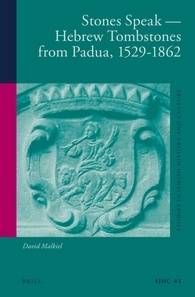
Before Emancipation the history of Jewish burials is a history of discrimination: the municipal authorities authorized the Jewish communities to bury their dead only in extra muros cemeteries, outside the city walls. After the Unification of Italy the situation changes: the emergence of the public cemetery in the nineteenth century gradually erased the discrepancy between the sepulchral practices of European Jews and Christians that existed during the medieval and early modern periods. In fact, the end of the Jewish interdictions allowed the Jews to be buried in large and modern cemeteries constructed outside the walls – as a new monumental “City of the Dead”. In several cases, Jewish communities were allowed to open a “Riparto Israelitico” annexed to the Catholic cemetery (Turin, Milan, Genoa, Bologna, Rome), whereas
in others, they were allowed to renovate old autonomous cemeteries (Venice, Ferrara) or to build new ones (Livorno, Florence). Then, as a result of the Emancipation, the graveyard became a site for the expression of modern values. Epitaphs expressed new aesthetic tastes, cultural values, and social conditions, while tombstones adhered to the Neoclassical trends of the day. Yet these epitaphs and tombstones, for all their radical change, were carefully designed to express a Jewish voice and to depict the Jewish identity of the deceased.
David Malkiel’s latest book Stones Speak – Hebrew Tombstones from Padua, 1529-1862 faces these complex issues. Firstly, the author explains in the introduction that “Padua is a representative community. Northern Italy was dotted with small to medium-sized Jewish communities with similar socioeconomic structures, and Padua was a variation on the general pattern. Its social and cultural norms can be reasonably projected on dozens of similar communities across the north of Italy, granting this study historical significance that is regional rather than local.” In 1384 the Lord of Padua, Francesco da Carrara, allowed the Jews to buy land at the former contrada San Leonardo, nearby an existing cemetery. But the oldest existing Jewish cemetery is situated in via Isidoro Wiel, where the tomb of Rabbi Meir Katzenellenbogen can be found. The tomb still today is a pilgrimage destination for Jews from Israel and the United States. It was built in the sixteenth century, after the original one located outside Porta Codalunga was destroyed (in 1509) during the siege of Padua by the troops of Maximilian Habsburg. Three other cemeteries are located in what was called borgo Zodio: the two cemeteries in via Campagnola, where Isaac Abravanel, Minister of Ferdinand II King of Spain was buried, and the cemetery of via Orti, now via Pietro Canal, in use since 1820. Finally, one still in use is located in via Sorio, outside Porta San Giovanni; it was inaugurated in 1861.
Malkiel focuses his attention on the study of the tombstones, considered “as a lens through which to examine the historical development of Jewish culture in Padua. Tombstones generally range from those of modest proportions, with minimal biographical information crudely incised, to towering monuments with elaborate architecture, finely carved with artistic motifs and flowery inscriptions. This breadth of possibilities is rooted in the freedom of client and craftsman to design the tombstone as they pleased, for this activity was never regulated by civil or religious authorities. Consequently, tombstones as cultural artifacts are snapshots of a society's social and cultural proclivities at particular moments in time.”
The author claims that there is another reason why the study of Jewish burial inscriptions of Padua is so interesting and unique: “The survival of tombstones from the ancient world and middle ages is serendipitous, making systematic study of a prolonged period impractical. Padua is different because its series spans over three centuries and is almost unbroken. Hence, in addition to the scrutiny of individual inscriptions and tombstones, the study of them globally, through quantitative analysis over time, be it of metrical schemes, dimensions or longevity. The numbers supply the broad contours of cultural flow, while individual cases focus attention on particular features and variations, granting greater depth to our analysis.” Malkiel argues that while graves are a well-plowed field in the study of European art history for the Middle Ages and the Modern period, Jewish cemeteries instead have been the subject of numerous studiesthat have however overlooked the value of tombstones for cultural history. With this goal in mind, the author approaches the sources from the perspectives of literature (“Words”), art (“Stones”) and society (“Lives”). So, the book is characterized by a multi-level analysis of the subject that, based on several documentary sources of different nature and on a long-term study, constitutes an original interdisciplinary approach. The 1,224 surviving Jewish tombstone inscriptions of Padua express the cultural currents of their age, shedding light on the society of Padua's Jews and the social and cultural changes they underwent during the 330 years covered by this study.
In conclusion, the book Stones Speak – Hebrew Tombstones from Padua, 1529-1862 is an important contribution to our historical knowledge of the Jewish cemeteries in Italy. It is our hope it will also contribute to the development of future conservation projects of the important and rich architectural and sculptural heritage of Italian Jewry.
Andrea Morpurgo, PhD in History of Architecture and Urban Planning, Professor IED Master - Istituto Europeo di Design Madrid, Board Member “Fondazione per i Beni Culturali Ebraici in Italia”.
David Malkiel, Stones Speak – Hebrew Tombstones from Padua, 1529- 1862, (Leiden: Brill, 2014), pp. 404.
DOI: 10.48248/issn.2037-741X/659